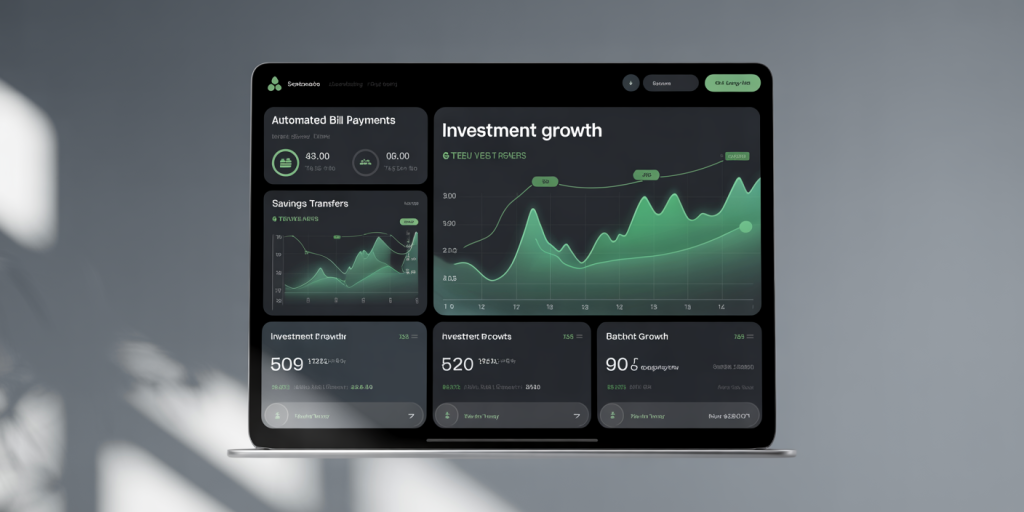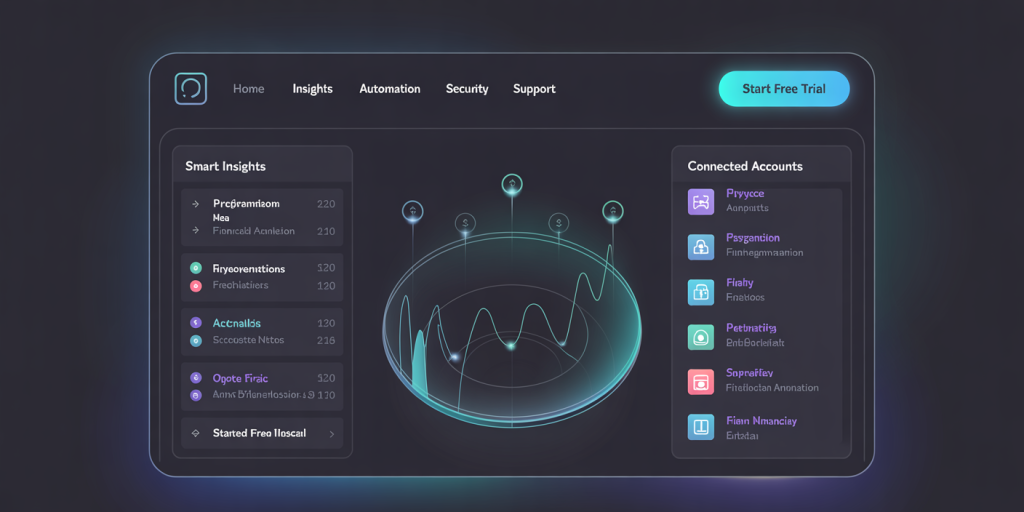How to Automate Your Finances: Set It and Forget It
Anúncios
In an era where managing finances can feel overwhelming amidst busy schedules, automating your money management is increasingly recognized as a smart, stress-free strategy. Setting up automated systems can help you stay on top of bills, savings, investments, and debt repayment without constantly requiring your attention. This approach not only ensures timely transactions but also encourages financial discipline, making long-term goals more attainable. According to a 2023 survey by NerdWallet, 62% of Americans who automate their finances reported significantly less stress about money management compared to those who handle everything manually.

The concept of “set it and forget it” means crafting a financial infrastructure that runs smoothly in the background. This article explores detailed, actionable steps to automate your finances effectively, supported by practical examples and industry data. Whether you’re looking to streamline bills, optimize savings, or systematically reduce debt, automation can transform your personal finance landscape.
Anúncios
Understanding Financial Automation and Its Benefits
Financial automation involves leveraging technology to execute recurring financial tasks with minimal human intervention. Common automation includes scheduled bill payments, regular transfers to savings accounts, and automated retirement contributions. This practice reduces the risk of late payments, helps maintain consistent saving habits, and improves overall financial health.
One significant benefit of automating finances is time savings. For instance, if an average individual spends about 6 hours per month managing bills and budgeting, automating these processes can reduce that time to under 30 minutes monthly. Furthermore, automation mitigates errors caused by manual management, such as missed payments leading to penalties or credit score damage.
Real-life examples underscore these advantages. Sarah, a 29-year-old graphic designer from Texas, used to scramble every month to pay credit card bills and transfer money to her savings account. After setting up automatic payments and transfers, she not only avoided late fees but also doubled her emergency fund in one year—all without actively thinking about these tasks.
Setting Up Automated Bill Payments
One of the most fundamental finance tasks to automate is bill payments. Most utility providers, credit card companies, and mortgage lenders offer options for automatic deductions from a bank account or credit card. This ensures bills are paid on time, reducing the risk of service interruptions or penalty fees.
When setting up automated payments, it’s crucial to verify the exact due dates and choose the appropriate payment sources. For example, paying a credit card bill from a checking account with insufficient funds can trigger overdraft fees, negating the benefit of automation. To avoid this, link payments to accounts regularly funded, such as your primary checking account with direct deposits.
Consider a comparative example between manual and automated bill payments:
| Aspect | Manual Payments | Automated Payments |
|---|---|---|
| Time required | 3-5 hours/month | 10-15 minutes (initial setup only) |
| Risk of late payment | High | Very low |
| Fees and penalties | Possible | Nearly eliminated |
| Stress level | Moderate to high | Low |
Data from a 2022 report by Experian indicates that individuals using automated bill pay reduced late payments by 70% compared to those relying on manual methods, highlighting automation’s effectiveness in maintaining good financial standing.
Automating Savings and Investments
Beyond bills, automating savings is a powerful way to build wealth with minimal effort. Setting up recurring transfers from your checking account to savings or investment accounts can help achieve specific goals like an emergency fund, vacation fund, or retirement.
For example, Tom, a 35-year-old engineer, automated a transfer of $300 every month into his Roth IRA. Over 10 years, even with modest returns averaging 6% annually, his consistent contributions grew significantly—showcasing the magic of compounding enhanced by consistency.
Several apps and financial institutions offer “round-up” features, where purchases are rounded to the nearest dollar and the difference is deposited into a savings account. This passive saving technique has gained popularity among millennials and Gen Z, with Acorns reporting a 50% increase in saving rates among users utilizing round-up automation.
Automated investing tools also allow individuals to regularly invest in diversified portfolios with minimal fees. Robo-advisors like Betterment and Wealthfront enable scheduled deposits into personalized portfolios, making it easier to stay invested without requiring market timing strategies.
Scheduling Debt Repayments Automatically
Managing debt repayments can be challenging when juggling multiple loans and credit cards. Automating these payments can help ensure consistent progress toward reducing principal balances, ultimately lowering interest payments and improving credit scores.
For people with multiple credit cards, setting up minimum payments automatically prevents late fees, while manually scheduling extra payments monthly can accelerate debt payoff. Alternatively, some lenders and financial services allow borrowers to automate accelerated payments or debt snowball methods.
Take the case of Linda, who owed $15,000 on three credit cards with varying interest rates. By automating minimum payments and programming an additional $200 monthly directed toward the highest-interest card, she paid off her debt two years earlier than expected. Automation ensured she wasn’t tempted to skip payments or reduce extra contributions during busy months.
It is important to maintain visibility into your statements periodically despite automation to confirm payments occur as scheduled and adjust if financial circumstances change.
Tools and Apps to Simplify Financial Automation
The digital age has produced an abundance of tools designed to streamline financial automation. Utilizing these tools can save time, reduce errors, and provide holistic insights into your financial health.
| Tool/Application | Automation Capability | Best For | Cost |
|---|---|---|---|
| Mint | Bill tracking and budget automation | Budget monitoring and reminders | Free |
| YNAB (You Need A Budget) | Scheduled budgeting and fund allocation | Hands-on budgeting enthusiasts | Subscription |
| Acorns | Round-up savings and micro-investing | Beginners in investing | $1-$3/month |
| Betterment | Automated investing and retirement contributions | Long-term investment automation | Fee-based |
| Prism | Bill payment automation and reminders | Bill management | Free |
For example, combining Mint for budgeting with Acorns for automated saving allows a user to control spending while simultaneously boosting investments without conscious daily effort.
Looking Ahead: The Future of Financial Automation
The landscape of financial automation is evolving rapidly with advances in artificial intelligence (AI), machine learning, and fintech innovations. Future applications will likely involve predictive analytics to optimize how and when money moves, personalized financial coaching based on spending habits, and increased integration across banks and investment platforms.

AI-powered platforms may soon automatically adjust savings rates or investment allocations based on real-time life changes such as income fluctuations or unexpected expenses. This dynamic approach will enhance the “set it and forget it” principle by adding intelligent adaptability rather than fixed, static rules.
Moreover, the rise of open banking allows a more unified financial experience, enabling seamless automation across multiple accounts and providers. Security measures also continue improving, reducing risks tied to digitized finance.
According to a McKinsey report (2023), by 2030, over 80% of financial transactions in developed markets are expected to be automated, with AI-guided advice playing a significant role. For consumers, this means greater empowerment through simplified managing tools, helping make financial decisions smarter and less stressful.
Automating your finances today sets a foundation to benefit from these innovations, allowing your money management to operate efficiently and effortlessly into the future.
—
In sum, automating your finances transforms complex money management into a streamlined, reliable process. By systematically setting up automated bill payments, savings contributions, investment plans, and debt repayments—and leveraging helpful digital tools—you minimize errors, reduce stress, and build a healthier financial future. Embracing ongoing technological advancements ensures your financial system remains optimized and adaptive, truly letting you “set it and forget it” with confidence.

